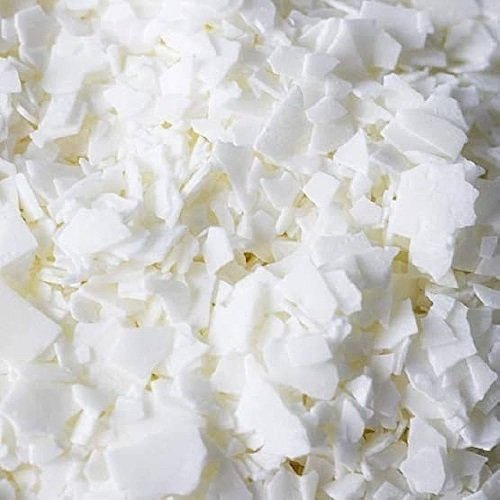In today’s world, where sustainability is no longer an option but a necessity, the materials we choose for our spaces speak volumes about our values. Among all the eco-conscious options, lime plaster is quietly reclaiming its rightful place in architecture and interior design. This ancient material, once used to build palaces, forts, and temples, is now being recognized as the future of sustainable living — and for good reason.
If you’re exploring natural, elegant, and environmentally responsible finishes, Lime Flooring Service in India and lime plaster from House of Lime are perfect examples of how traditional materials can lead modern design innovation.
Understanding Lime Plaster
Lime plaster is a wall finish made from natural lime, sand, and water. It differs from modern cement plaster in one major way — it breathes. That simple property makes it healthier, longer-lasting, and far more environmentally friendly.
When lime sets, it absorbs carbon dioxide from the atmosphere and slowly turns back into limestone. This natural carbonation process not only strengthens the plaster over time but also helps offset its own production emissions, making it one of the few truly sustainable building materials.
The Sustainability Edge
1. Carbon-Negative Material
Most industrial materials harm the environment — lime does the opposite. During its life cycle, it reabsorbs a large portion of the carbon dioxide emitted during production. In some cases, it even becomes carbon-negative when used alongside sustainable building practices.
2. Long-Lasting Durability
Lime plaster walls don’t just survive — they thrive. Unlike cement, which tends to crack over time, lime expands and contracts with temperature changes. This flexibility ensures that walls stay strong for generations, reducing the need for frequent maintenance or replacement.
3. Zero Toxic Emissions
Lime plaster is free from synthetic binders, VOCs (volatile organic compounds), and harmful chemicals found in paints and cements. It’s safe for indoor air quality, making it ideal for homes, schools, and healthcare environments.
4. Moisture Regulation
Because lime plaster is breathable, it prevents condensation and mold growth — two common problems in modern airtight buildings. This natural ability to regulate humidity contributes to healthier living spaces and reduces dependency on artificial climate control.
The Aesthetic Revival
Beyond sustainability, lime plaster offers unmatched visual appeal. Its soft texture, subtle movement, and handcrafted finish create an atmosphere that feels alive. Every stroke reflects light differently, producing a warm, natural glow that’s impossible to replicate with synthetic paints.
Designers across India are embracing lime plaster for its versatility — from minimal modern homes to boutique hotels and heritage restorations. When paired with Architectural Services in India by House of Lime, these surfaces become works of art, blending traditional techniques with modern spatial design.
Comparing Lime Plaster and Cement Plaster
| Feature | Lime Plaster | Cement Plaster |
|---|---|---|
| Sustainability | Carbon-absorbing and eco-friendly | High carbon footprint |
| Durability | Becomes stronger with age | Prone to cracks over time |
| Breathability | Allows moisture to escape | Traps moisture, causes dampness |
| Air Quality | Non-toxic, improves indoor air | Emits VOCs and traps humidity |
| Maintenance | Long-lasting and repairable | Needs repainting and patchwork |
The difference is clear — lime isn’t just better for the planet; it’s better for the structure, too.
Lime in Modern Architecture
The modern architectural movement is shifting toward materials that align with environmental responsibility. Lime plaster fits seamlessly into this vision. Its ability to merge aesthetics with sustainability makes it the preferred choice for architects designing future-ready spaces.
In India, this revival is being driven by innovators like House of Lime, who specialize in Lime Flooring and Lime Plaster applications for both residential and commercial projects. Their approach blends craftsmanship with conscious design — ensuring that every project reflects authenticity, durability, and ecological mindfulness.
The Role of House of Lime in Sustainable Design
House of Lime has reimagined how natural materials fit into contemporary architecture. Their Lime Flooring Service in India and Architectural Services in India go beyond surface-level aesthetics. They build environments that breathe, adapt, and endure.
Their team of artisans and architects work hand-in-hand to deliver:
-
Authentic lime plaster finishes crafted with traditional techniques.
-
Climate-sensitive designs that optimize natural light and ventilation.
-
Material palettes that prioritize sustainability without compromising style.
This holistic approach is why House of Lime has become synonymous with timeless, eco-conscious design in India.
The Emotional Connection to Natural Materials
There’s something deeply grounding about living in spaces made from earth-based materials. Lime plaster’s natural texture, light play, and gentle color variations create interiors that feel human — not artificial. It connects us to the environment and promotes a sense of calm and balance often missing in modern concrete homes.
Choosing lime plaster isn’t just a design choice; it’s a lifestyle decision. It’s about slowing down, appreciating craftsmanship, and choosing quality over quantity.
A Material for the Future
As sustainability takes center stage, lime plaster offers a way to merge innovation with integrity. It’s adaptable for modern architecture, compatible with energy-efficient systems, and ideal for restoring historical buildings. More importantly, it reminds us that true progress doesn’t always mean new — sometimes, it means rediscovering what’s always worked.
With increasing awareness about ecological design and material health, lime plaster’s role will only grow stronger. It’s not just a nod to the past — it’s the blueprint for the future.
Final Thoughts
Lime plaster represents the perfect balance between heritage and innovation. It’s sustainable, beautiful, and built to last — everything modern design strives to be.



